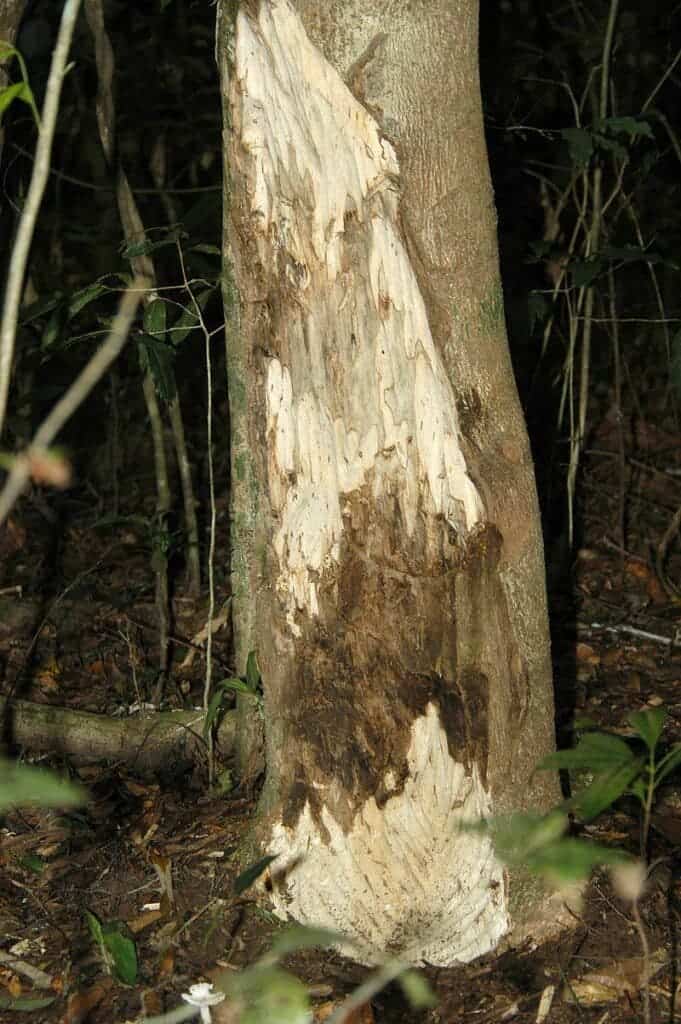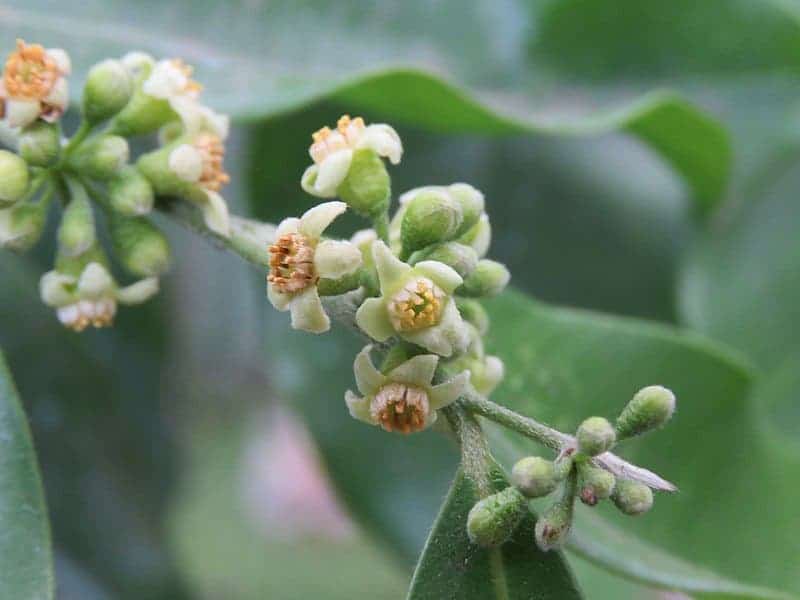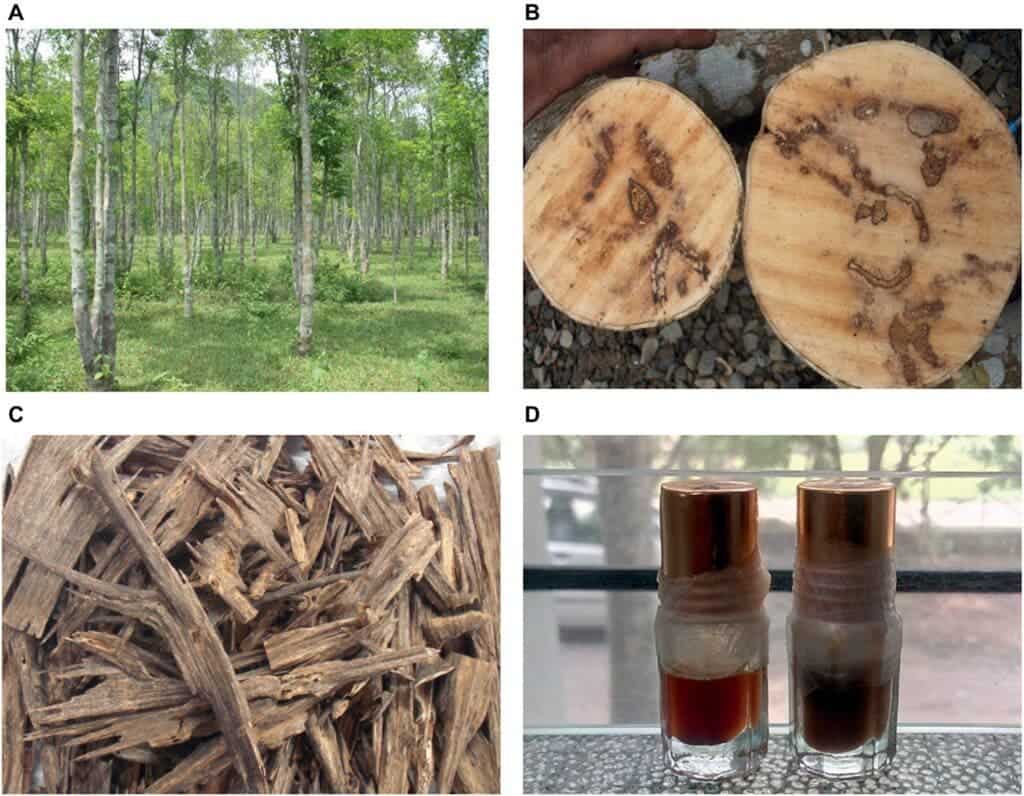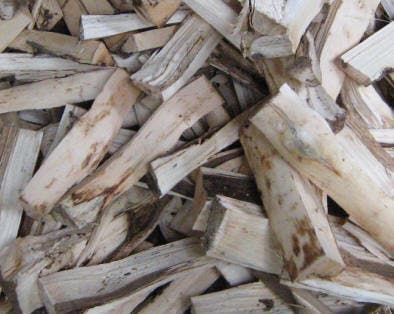Agarwood price
ABOUT THIS TREE – Our Nha Trang Classic from a single wild tree. 100% wild agarwood. Superb classic wild Viet agar profile. Sweet, complex, resinous. Our Best Value.
The scent of infection: Why agarwood is the most expensive wood in the world
Agarwood, one of the most sought-after incense scents in the world, is the result of a mold infection.
Exquisite perfumes take inspiration from nature all the time. All sorts of scents were derived from all things blooming and flowery — but sometimes, things can get very weird. This is exactly the case with agarwood.
This alluring and sought-after scent comes not from a blooming flower or a blossoming tree, but rather from infection. As ironic as it sounds, this smell, which is often a status symbol for the wealthy, comes from mold.

Wood for the gods
Agarwood, one of the costliest types of wood in the world, produces a mesmerizingly heavy, musky, and balsamic aroma alongside the woody notes that make it one of a kind. Its oil is being used in world-class perfumes and is sold at very high prices. Agarwood chips can be sold for as much as $25,000 per kilogram (2.2 pounds), and, in its purest form, agarwood oil can cost up to $80,000 per liter.
Agarwood has left a mark in many ancient cultures and was described as the fragrant product of wealth and luxury as early as 1,400 BC. For centuries, only kings and high officials could afford it, and it was known far and wide as a symbol of wealth. Not only that, but agarwood was also a part of many momentous religious events since it was allegedly used at the burial of Christ. Agarwood was also the preferred perfume of the prophet Muhammad and was used for offerings in Buddhism and Taoism. Agarwood is also highly revered in the seminal texts of Hinduism. But this aroma has a dark side.
The scent of stress
Aloeswood, eaglewood, or oud, as some may call it, is not your everyday tree. This wonder is only confined to the pockets of South and Southeast Asia growing up to elevations of 1,000 meters (3,280 feet) above sea level, with 500 meters (1,640 feet) being the most ideal for its optimal growth. It belongs to the genus Aquilaria which are typically fast-growing trees, producing flowers and seeds at as early as four years old.

Not every Aquilaria species is the same and not every tree is guaranteed to produce this coveted aroma. In actuality, the formation of the fragrant agarwood depends on complex biotic and physical stress being induced on the trees. Yes, stress is what makes this wood extra pricey.
Natural, healthy Aquilaria trees are pale and odorless. But that changes if they become infested by a specific type of fungus called Phialophora parasitica. Just like any other organism, Aquilaria turns on its defense system to ward off these foreign microbes. It does this by producing a stress-induced resin called aloes, which later on was found to give off a signature aroma.
This dark and moist resin slowly infiltrates the infected heartwood in the hopes of halting the spread of infection. This changes the color of the heartwood to a darker tone — and it is this type of wood that is called agarwood. You can thank this mold for turning the tree from a rather uninteresting species to a highly-coveted commodity.

“Agarwood is quite unusual, since stressed, diseased, and malformed trees are preferred over healthy, luxuriant ones,” write the authors of a scientific review on agarwood. “In fact, the infected heartwood of agar is the most expensive wood in the world.”
Once the connection was made between the fungus and the scent, it didn’t take long to figure out that this could be used to produce strong pleasant fragrances, and local foresters and experienced biologists can distinguish between a healthy and infected Aquilaria on sight,. In fact, cultures from Japan to Vietnam to China and South America have used agarwood-based fragrances for centuries. Numerous religions cherish it, and various historical and mythical texts place great emphasis on its properties.
But harvesting agarwood is not an easy process.
Harvesting it is painstaking and requires skills and experience. The dark aromatic portion needs to be separated from the healthy portion, a process in which it is carved out by hand. These wood chips are normally what get sold in the market and are commonly used as incense. Extracting the oil from the wood is a different process employed by scent manufacturers. Because they are so expensive and hard to obtain, both the wooden chips and the oil are commonly adulterated by many sellers, which brings down the price, but also reduces the quality of agarwood. Also, since several Aquilaria species produce agarwood, they are often mixed together.
Smells like extinction
As you may have guessed by now, it takes very specific conditions to produce agarwood. Add this to the fact that several agarwood-producing species are threatened by deforestation and overharvesting, and it’s not hard to figure out what would happen.

Natural agarwood is rare and due to unsustainable production and trade — and now, it has become rarer. All varieties of Aquilaria trees are now classified as critically endangered as their population sharply declined by 80% over the last 150 years. Researchers have developed methods that artificially inoculate agarwood with microbes to produce the distinct aroma, but the demand for the natural one is still rocketing.
As of 2013, the current global market for agarwood is estimated to be in the range of US$6-8 billion, and is growing rapidly. According to some estimates, in 2018, the market had grown to $30 billion.
Unsurprisingly, this means the hunt for agarwood is arduous, and experts say that only 2% of the wild trees are fully infected to produce agarwood naturally, which leaves these species on very thin ground.
Concern over the demand for agarwood has led to the inclusion of all the agarwood-producing species in the CITES (the Convention on International Trade in Endangered Species of Wild Fauna and Flora) protected list. The collection of agarwood from natural forests is now illegal, and several plantations have been established, especially in Malaysia, Sri Lanka, and Vietnam. These plantations are used both for commercial purposes and for reintroduction.
It’s an unlikely journey that brought these trees to the forefront of international trade, and as it often happens, this hasn’t really been a positive thing for the trees themselves. Thankfully, with careful conservation and synthetic replacements, the rising demand for agarwood won’t threaten tree populations any more.
Agarwood isn’t nearly the only natural resource being driven to extinction by trade. A study has estimated that 30% of threats to species are driven by international trade, and most things aren’t nearly as expensive as agarwood.
Shop


Shop now at Aroma Sublime. Artisan aromatics like Oud, sandalwood, agarwood, Frangipani, rose and more.
“The Sacred Mountain” 127+grams • Single Display Grade Piece of Premium Wild Agarwood • Nha Trang Vietnam
“The Sacred Mountain” 127+grams • Single Display Grade Piece of Premium Wild Agarwood • Nha Trang Vietnam
127+grams of Nha Trang wild agarwood perfection in one beautiful display quality piece reminiscent of the unique natural form of some of Vietnam`s most sacred mountain peaks. One of our premium wild agarwoods with an aroma that will not disappoint!
USE OUR ACTIVE DISCOUNT CODES FOR AN ADDITIONAL DISCOUNT OF 25% ON TOP OF THE SALE PRICE!
An excellent value at $28 per gram plus an instant 30% discount!
ABOUT THIS TREE – Our Nha Trang Classic from a single wild tree. 100% wild agarwood. Superb classic wild Viet agar profile. Sweet, complex, resinous. Our Best Value.
$28 per gram when priced by the gram
An important note on our One-of-a-kind Agarwood Display pieces:
These are not intentional carvings, but rather they are natural forms resulting from the removal of the lighter colored and less aromatic layers of the tree. What remains is the darker wood that is much more aromatic and highly prized in its natural form. We select the most beautiful pieces and name them based on the Taoist and Buddhist traditions or inspiration and feeling provided by a natural form or object. That said, they are not intended to be accurate sculptural depictions of what is suggested by the name.
Our Strict Quality Control Policy on Raw Agarwood Orders
• We always do out best to send you beautiful looking whole pieces of agarwood as best we can, regardless of the size of your order. Already, our entire agarwood supply is always carefully chosen for both aroma and aesthetic appeal. Then we do our very best to fill your order with solid, attractive pieces of agarwood, as best we can, based on the number of grams you purchase of a particular variety. Purchasing at least 5 grams or more will give you an aesthetic advantage allowing us to select more attractive single pieces of agarwood just for you that will demonstrate clearly the natural form, color, and texture of the wood you have chosen. We also have many larger display quality pieces available. We are happy to show you specific pieces on request.
• You will never receive dust, small chips, or low quality scraps; unless the product is described and shown as such in the listing.
• When we say wild, we mean wild. All our wood is genuine 100% naturally occurring wild agarwood if specified as “wild”. Occasionally we sell vetted naturally “cultivated” (farmed) or “semi-wild” (agarwood growth influenced by human intervention in a natural setting) agarwood but this will be clearly specified as such in the listing. When we say wild, we mean wild.
